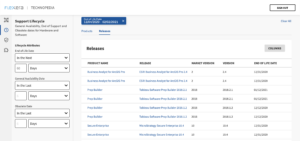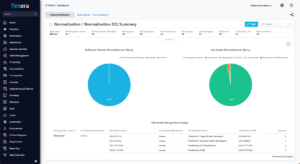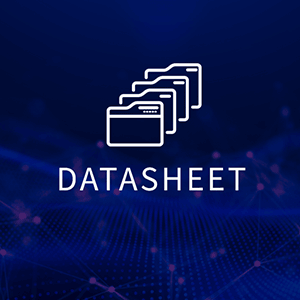In our data-driven world, the sheer volume of information organizations must manage is staggering. IDC predicts the global datasphere will grow to 175 zettabytes by 2025. This explosion of data has brought forth challenges in managing, analyzing and deriving value from it. Data normalization is the process that helps organizations address these challenges by transforming raw, inconsistent data into a standardized and structured format.
What is data normalization?
Data normalization is the process of organizing, refining and structuring raw IT data into a consolidated and categorized list of all hardware and software assets. It’s about ensuring that disparate data sources, formats and structures are brought to a standard format, eliminating redundancies, reducing anomalies and ensuring data is consistently categorized and easily comparable.
Why is data normalization essential?
- Uniformity and consistency: Data normalization ensures data across the IT estate is consistent, eliminating discrepancies and redundancies. This uniformity is crucial for accurate reporting and analysis.
- Enhanced decision making: With a clear view of IT assets, businesses can make informed decisions related to IT investments, risk management and compliance. A study by Experian found that 95 percent of organizations see negative impacts from poor data quality.
- Optimized IT investments: By understanding their IT landscape, organizations can allocate resources more effectively, reduce unnecessary costs and ensure they’re leveraging the most up-to-date tools.
Overcoming data normalization obstacles
- Managing data volume: The exponential growth of data presents a significant challenge for organizations. Managing vast amounts of data requires not only robust storage solutions, but also effective strategies to process and analyze it. Cross-functional teamwork, rapid response to changing regulations, user education and automation are essential components in handling data volume. Modern technologies such as SaaS cloud use, standardized tools and real-time data processing can further enhance data management capabilities.
- Ensuring data quality: Data quality is the cornerstone of effective decision making. Poor data quality can lead to incorrect insights, impacting business strategies and outcomes. Centralized systems and data cleaning automation are vital to ensure consistency and accuracy across diverse data sources. Embracing digital business demands, efficient data architecture, scalability, collaboration and accurate management can further enhance data quality.
- The importance of CMDB enrichment: CMDBs (configuration management database) can often be dynamic and unreliable. Through CMDB enrichment, organizations provide clean, curated datasets to update and enhance the value of their CMDB without compromising its authoritative position within IT service management (ITSM). Incorporating more inventory sources and maintaining a reliable source of truth for the IT estate ensures the CMDB remains a vital tool in IT management.
The future of data normalization
As technology continues to evolve, the importance of data normalization will only grow. Organizations will need to adopt tools and strategies that offer deeper insights, more granular control, and the ability to adapt to an ever-changing IT landscape. Data normalization is no longer a back-office task; it’s a strategic imperative. It’s the bedrock upon which businesses can build strategies, make informed decisions and drive growth. Amid the vast sea of data, normalization acts as the guiding light, leading businesses to actionable insights and clarity.
In a world where outdated and inefficient technology can lead to vulnerabilities and financial setbacks, normalization is the key to staying ahead of the curve and ensuring a competitive edge. It’s not just about organizing data; it’s about empowering businesses to thrive in a digital age.
Navigating the data landscape with Flexera IT Visibility
In the complex world of data normalization, having the right tools and insights is crucial. Flexera IT Visibility, powered by Technopedia, offers a comprehensive view of IT assets, including hardware, software and cloud services. This connection to Technopedia, the world’s largest and most comprehensive repository of market intelligence on technology products, ensures that the information is accurate, reliable, and actionable.

Flexera delivers comprehensive technology product coverage with Technopedia
With Flexera IT Visibility, organizations can unlock:
- Data accuracy: Leveraging Technopedia’s extensive database, Flexera ensures IT asset information is consistent and up to date, empowering businesses to make informed decisions.
- Cost savings: By identifying redundancies or underutilized resources, organizations can uncover potential cost savings. In fact, Flexera’s Tech Spend Pulse Report shows that 30 percent of software spend is wasted due to unused or rarely used software.
- Risk mitigation: With a clear view of all assets, businesses can identify potential vulnerabilities, outdated software or hardware nearing end of life, allowing for timely updates or replacements.

Flexera streamlines data normalization for effective IT management
IT Visibility
The business promise of your IT is huge. But it takes a complete, up-to-date view of your hybrid environment to make the most of it.
By integrating Technopedia’s vast knowledge base, Flexera IT Visibility not only helps normalize the IT estate but also fosters strategic alignment with business goals. It’s not just about managing data; it’s about transforming it into actionable insights that drive growth and innovation.
Navigating the complex world of data normalization doesn’t have to be a solo journey. Flexera is here to guide you every step of the way. With our free IT Visibility analysis, you can gain insights into your IT estate, uncover hidden opportunities, and take control of your data like never before. Don’t miss out on this opportunity to transform your IT estate.







